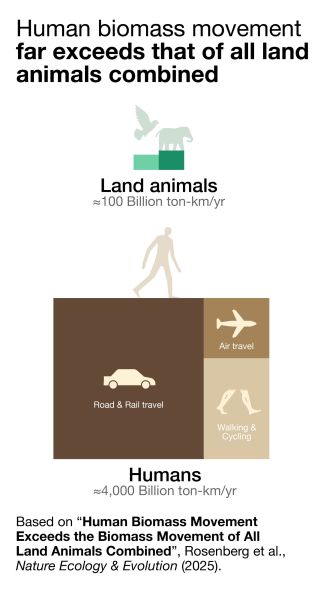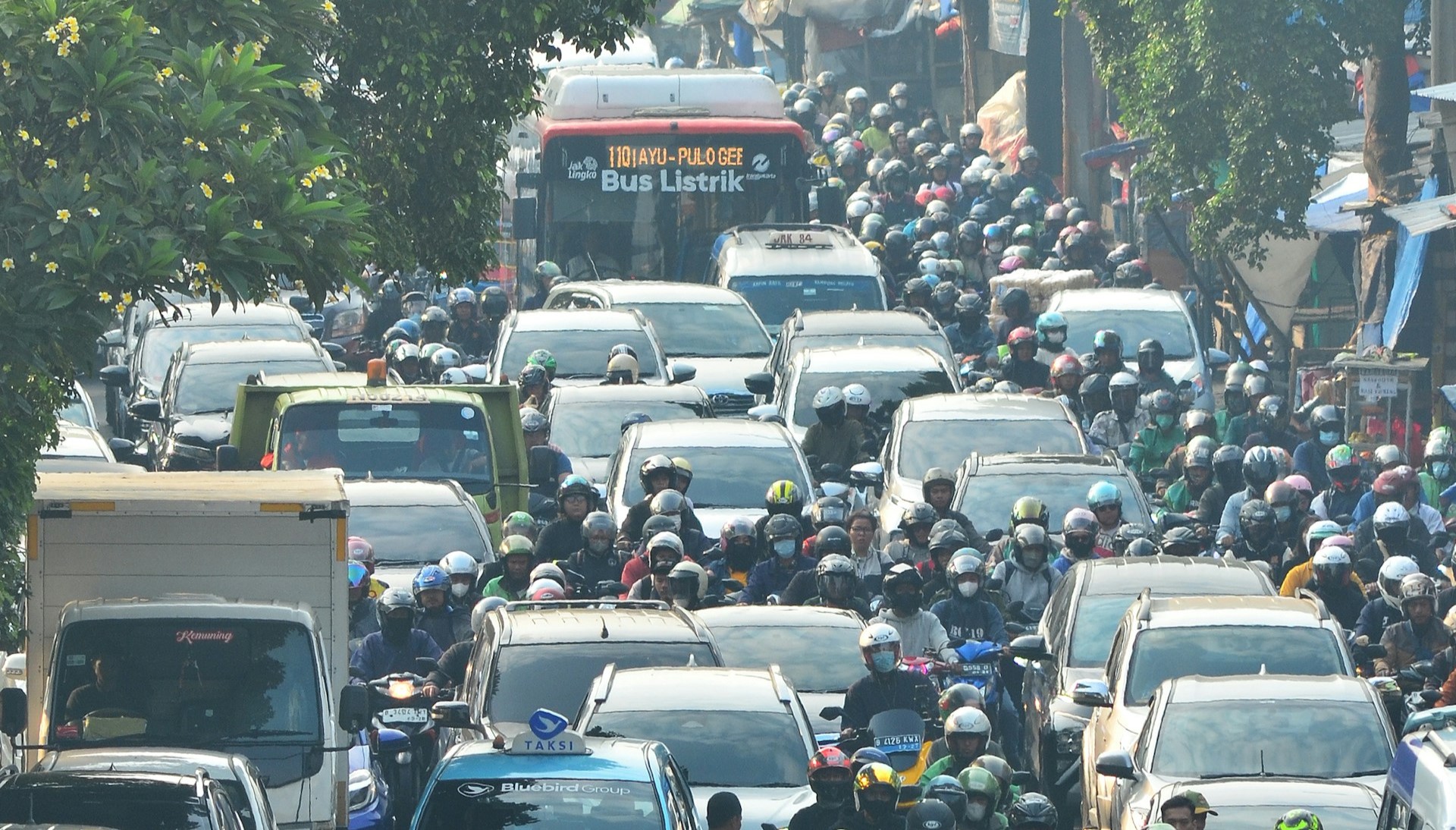Media release
From:
Human biomass movement may be up to 40 times greater than that of all land animals combined, according to research published in Nature Ecology & Evolution. An accompanying Nature Communications paper finds that wild mammal biomass has more than halved since 1850, and that marine mammal biomass in particular has decreased by around 70%. The findings offer new insights into global mobility and the shifting composition of animal biomass over time.
Mobility is a defining feature of animals that shapes ecosystems through foraging, migration and nutrient transport. Humans also move extensively, both on foot and via transportation such as planes, trains, and automobiles, for example. Comparing the movement of biomass — defined as the product of body mass and distance travelled — provides a direct metric to assess the scale of human and animal activity.
Yuval Rosenberg and colleagues, writing in Nature Ecology & Evolution, analysed scientific literature and hundreds of data sources to estimate the global movement of biomass across species in recent years. They defined the biomass movement of a given species as its total biomass multiplied by the distance it actively travels per year. The authors found that human biomass movement is over 40 times greater than that of all wild land mammals, birds, and land arthropods combined. The authors also found that the biomass movement of marine animals — which is the largest wild animal movement on Earth — has been halved since 1850, owing to industrial fishing and whaling. By contrast, human biomass movement has increased approximately 40-fold over the same period.
The authors illustrate these scales with case studies. For example, the annual migration of over a million wildebeest, gazelles, and zebras in the Serengeti has a biomass movement comparable to large-scale human gatherings, such as the FIFA World Cup or the Hajj. Additionally, the daily vertical migration of zooplankton and mesopelagic fish in the ocean exceeds the biomass movement of all land animals and rivals that of humans walking and cycling.
In a Nature Communications paper, Lior Greenspoon and colleagues estimated the historical trajectory of mammalian biomass since 1850 from various datasets and estimates including the History database of the Global Environment (HYDE) and United Nations’ World Population Prospects database. They found that the combined biomass of wild mammals has declined by more than half, and the biomass of humans and domesticated mammals, such as cows and sheep, has increased nearly fivefold. Marine mammal biomass alone has decreased by around 70%, mainly driven by the decline of larger species — such as blue, humpback, fin, and sperm whales.
Although data estimates from the 19th century should be treated with caution, the findings highlight the need for improved monitoring of animal movement and abundance, particularly for smaller species and underrepresented regions. Biomass movement may inform future research on ecological processes and the environmental impact of human mobility.
Multimedia





 International
International


